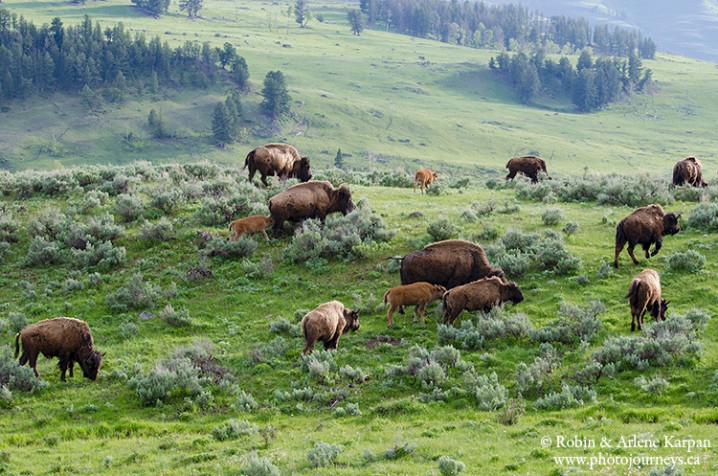
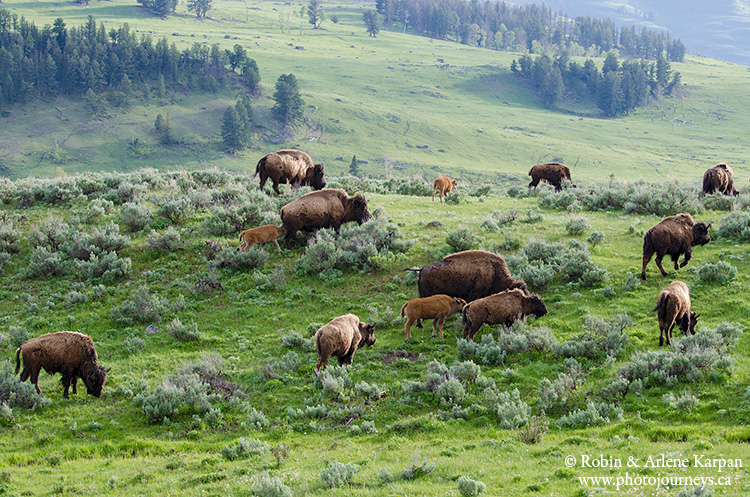
We watch from the side of the road as a female wolf gorges herself on an elk that the pack had killed the previous night. When she leaves, she is so full of meat that it seems an effort to walk. The den is about two miles away and she is likely taking food back to the pups. Almost immediately after she leaves, a large grey male shows up and digs in. He has a more casual attitude as he eats for a bit, lies down for a rest, and occasionally gets up to chase away a bold bald eagle eyeing the tasty-looking carcass.
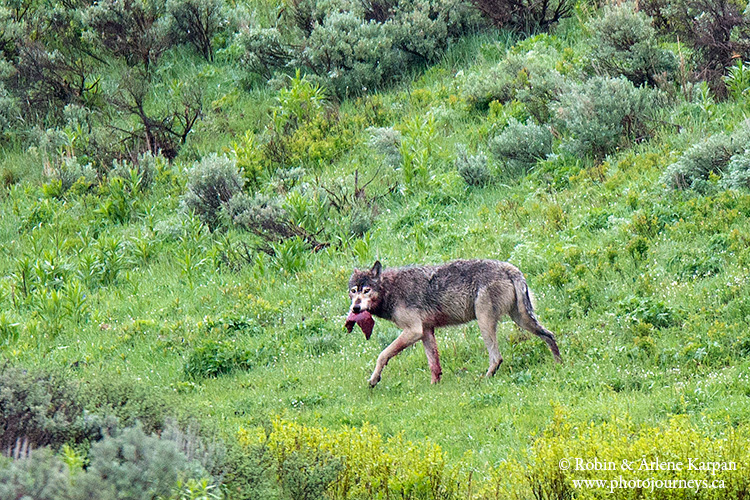
As in most of the United States, wolves were killed and driven from Yellowstone National Park. With an initial shipment from Canada in the mid-1990s, wolves were re-introduced to the park, and today there are an estimated 400 wolves in the greater Yellowstone area, centred mostly in the Lamar Valley in the northeast part of the park. Yellowstone boasts a rich array of wildlife from bison to black bears, grizzlies, elk, pronghorn, white-tailed and mule deer, bighorn sheep, mountain goats, among others. But to most visitors, and especially photographers, it’s the wolves that are the most sought after. While there is certainly no guarantee, if you spend enough time in the Lamar Valley, there’s a reasonable chance of seeing wolves. Getting photographs of these elusive creatures, however, is seldom easy. We got this wolf photo using a 600mm lens, with a 1.4 teleconverter attached, and even that was pushing it.
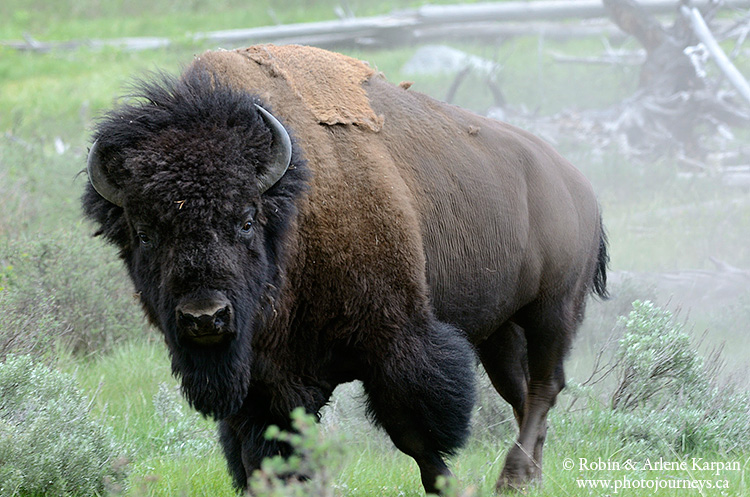
The wildlife icon of Yellowstone is the bison. They never completely died out here, although they came precariously close. Afters years of conservation, the few remaining animals have multiplied to around 4,600. We have seen bison in several other parks, but this is a completely different experience because of the sheer number we can see at once. Looking over hundreds of bison dotting the broad grasslands of the Lamar Valley is like a glimpse into our pre-settlement past. While longer telephotos lenses are best for most wildlife, you can get away with shorter lenses for bison. We often find them grazing right beside the road.
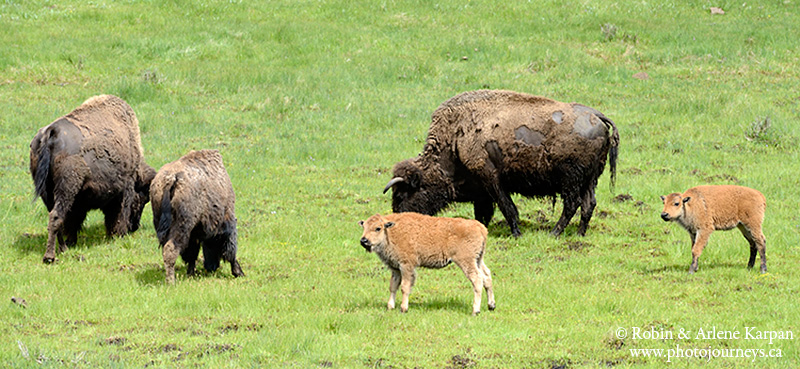
You might encounter wildlife anywhere in the park, but if your main goal is wildlife photography, the Lamar Valley is definitely a prime area. One frustrating aspect of wildlife photography in much of the park is that many of the roads are narrow, there’s plenty of traffic, and unless you happen to come to a roadside pull-off, it’s not practical to simply stop whenever you see wildlife. When animals do decide to hang out near the road, park staff are often quickly on the scene to keep traffic moving so that traffic jams don’t develop. The wide Lamar Valley, with less traffic than many parts of the park, is more suited to pulling over when you want to investigate further. Most important, this is home to a lot of critters, with the largest herds of bison and the centre of wolf activity, but also popular with elk, pronghorn, and bears. The best time to cruise the valley is around sunrise, when many animals are most active and only the most diehard photographers and tourists are on the road. Late evening can be rewarding as well.
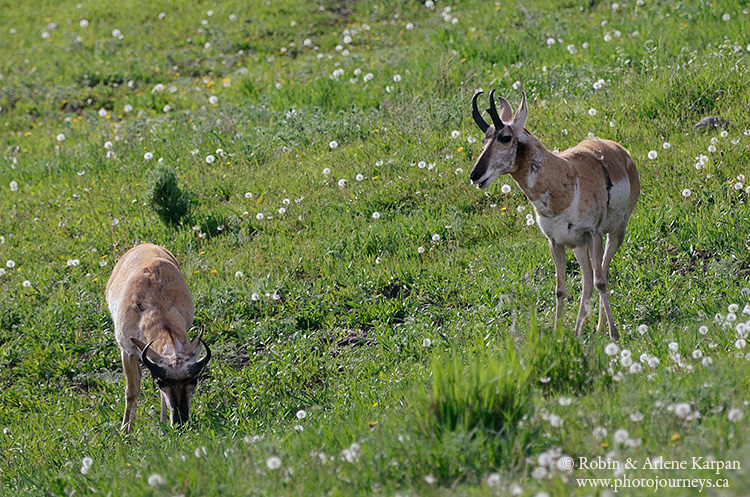
When we were looking for animals to photograph, sometimes things worked out, and sometimes they didn’t, which is often the case in wildlife photography. But one of the nice things of photographing in Yellowstone is that the scenery is always there. So even when the critters don’t cooperate, there’s plenty of dazzling landscapes that are often just as compelling.
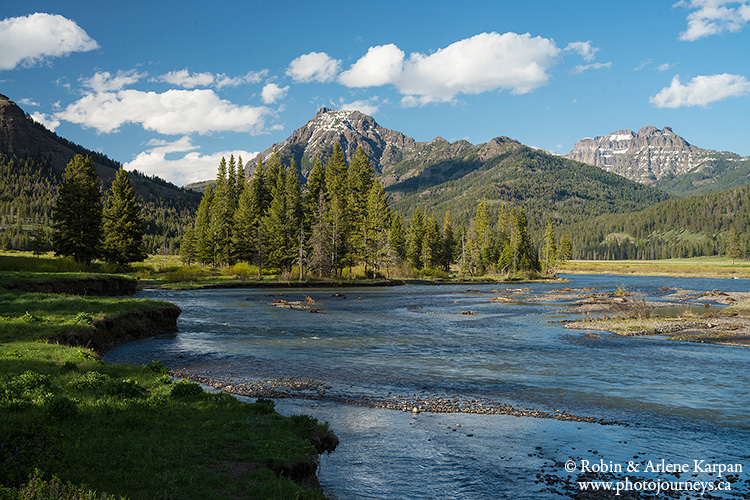
Feel free to PIN this article


